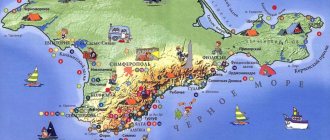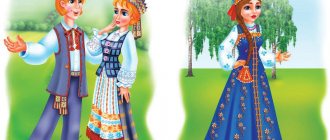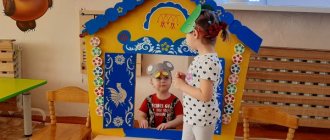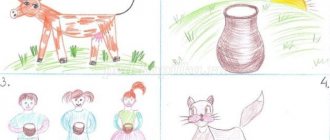Summary of a conversation with children on the topic “Rules of behavior in the classroom” in a preparatory group for school.
Goal: to consolidate children’s ideas about the rules of behavior in the classroom.
Educator. Guys, tell me, what is the name of our group?
Children's answers. (Preparatory group for school.)
Educator. So, you and I will now prepare for school.
We have classes every day in kindergarten. What do we do in class?
Children's answers. (We draw, learn poetry, etc.)
Educator. Correctly, in class you learn to count, draw, and tell stories.
Now you know a lot of fairy tales, poems, you can count, and draw beautiful patterns. You learned all this in class. This means that the classes helped you learn a lot of new and interesting things.
At school, all children go to lessons. When you go to school, the teacher will also teach you to count, write and read in class. She will tell you about our country, about our native nature, and much more.
Guys, now think and tell me: how should I study in order to remember everything that I tell you and show you in class?
Children's answers.
Educator. That's right, you said that you need to carefully listen to the task, the story, and look at the picture. Why do you think it is so important to be mindful?
Children's answers. (To complete the task correctly. So as not to forget anything.)
Educator: If one of the children does not listen attentively to the explanation, is distracted, he himself will not complete the task and will disturb his comrades.
But we must not only be attentive, but we must also try.
Only when the task is performed carefully, diligently, and slowly, the result is good.
But it happens that the work does not work out because it turned out to be very difficult. What should you do then?
Children's answers. (Consult a teacher or friend for help.)
Educator. That's right, guys, you should never quit your job if it turns out to be difficult! You need to force yourself to redo the work again and again, call a teacher to help correct the mistake, or turn to a friend. And then everything will definitely work out.
And if a friend asks you for help, what will you do?
Children's answers.
Educator. Well done guys, you know how to help each other.
If you help each other, each of you will learn a lot.
You should also behave with restraint in class and not interrupt your friend who is answering. Tell me why this is so important.
Children's answers. (You can’t move around, otherwise you’ll overhear the question, confuse your friend, and he might forget something. You need to listen to your friend’s answer in order to be able to help him if necessary).
Educator. Right. During classes, you all learn together, so everyone should not forget that their friends are nearby. Undisciplined behavior can confuse your comrade, preventing him from concentrating and responding well.
Guys, today we talked about how to study, we remembered that we need to complete tasks well, try, be attentive and disciplined, and help each other. I am very glad that you know these rules and understand why they must be followed. Let's agree that if someone forgets a rule, you will remind him. By following these rules, you will be able to learn a lot more, you will know and be able to do even more.
These rules will help you do well in school.
Summary of the conversation
Okay, well done! Children sit on chairs. Let's look at our illustrations. There are illustrations here that are not like all of them (on the easel with bad deeds there are 3 pictures depicting children's theft).
What do they show? (Children answer.)
What do you think: What does it mean to steal? (Children answer.)
To sum it up, we talk to the children about the fact that you cannot take other people’s things without permission, it’s bad.
Guys, I have another interesting book, listen, I’ll read you an excerpt from it. Reading an excerpt from a story by L.N. Tolstoy's "Bone".
“My mother bought plums and wanted to give them to the children after lunch. They were on the plate. Vanya never ate plums and kept sniffing them. And he really liked them. I really wanted to eat them. He kept walking past the plums. When there was no one in the upper room, he could not resist, grabbed one plum and ate it. Before dinner, the mother counted the plums and saw that one was missing. She told her father.
At dinner, the father says: “What, children, didn’t anyone eat one plum?” Everyone said: "No." Vanya turned red as a lobster and also said: “No, I didn’t eat.”
Then the father said: “Whatever one of you has eaten is not good; That's not the problem. The trouble is that plums have seeds, and if someone doesn’t know how to eat them and swallows a seed, he will die within a day. I'm afraid of this."
Vanya turned pale and said: “No, I threw the bone out the window.” And everyone laughed, and Vanya began to cry.
I ask the guys questions for analysis:
1. What did Vanya do?
2. Is this a good deed or not?
What kind of mood do you think a person is in if he sees a bad deed? And when he does a good deed, is it right? A happy emoticon is attached next to the image of good deeds, and a sad emoticon is attached to the illustration with images of bad deeds.
Now let's play with you.
A game
- “Take care of the object.”
Children (guards) stand in a circle. Each child has a toy at his feet. The leading child (thief) is in the circle. When explaining the rules of the game to the children, we say that the leader is in the center, since the word “thief” is not beautiful and the actions that a thief commits are bad, so we mean by the word thief “leader.” The teacher turns on the music. At this time, the children move in a circle one after another, and the leader moves in the opposite direction. The teacher stops the sound of the music, at this time the children take away the toy lying next to them, and the presenter (thief) tries to get ahead of the children and take the object. The leaders change.
Okay, well done! Children sit on chairs.
Let's sort it out with you if suddenly you took someone else's thing without permission. What needs to be done.
Children express their versions of answers to the teacher’s question. The teacher summarizes the answers. It is necessary to let the children know that if they took someone else’s thing without permission, they must return it to the owner and apologize.
Summary on the topic conversation I am a man
Outline of the lesson-conversation
on the topic: “I am a man”
(school preparatory group)
Prepared by teacher: Lysogorskaya I.A.,
Software task:
on the basis of research activities, develop the idea that man is a part of nature, and at the same time a thinking being; improve children's speech, develop imagination, creative imagination, communicative communication.
Materials and equipment:
a model of a person’s image, cards with images of living and inanimate objects, a “brain
”
, pictures for drawing up portraits, wax paper, scissors, a ruler.
Contents of organized children's activities
1. Introductory word from the teacher.
The teacher tells the children that today they will talk about a person.
2. Conversation “I am a man”
Man is alive, like plants and animals. He moves - walks, runs, jumps, eats, breathes air, like all living things. Feels (hears, sees, smells, pain, hunger, ambient temperature, joy, sadness and much more). Releases substances that the body does not need (sweat, mucus, processed food, etc.).
In order to live, a person must have organs and parts of the body intact and functioning normally.
During the conversation, the teacher asks the children to name the main parts of the human body
(head, neck, torso, arms, legs), show the organs of human movement (bones, muscles, joints (on the skeleton)), name the organ of vision (eyes), organ of smell (nose), organ of taste (tongue). Explains that the skin is an organ of excretion, protection, and sensitivity. The teacher shows on a model the location of human body parts and organs and talks about their purpose.
Man, unlike plants and animals, is a rational being; he thinks, speaks and acts consciously (showing a model of the brain).
Man, just like plants and animals, needs certain environmental conditions; he cannot live without air, water, food, soil, etc.
The teacher invites children to find similarities and differences in plants and animals, in plants and humans, in animals and humans.
3. The game “Living - Nonliving” is played
Concludes that man is a rational, humane being. He treats other people, plants, and animals with care and concern; By showing care and mercy, he himself becomes better. And if he does not take care of living beings and is cruel to them, then he himself gradually becomes angry, rude, and unpleasant.
There are many people living on the planet. Each of them is a person. You are a person, I am a person, he is a person - we are all people. How do people differ from each other (there are boys and girls, women and men).
The teacher offers to count how many boys and how many girls there are in the group. What else do people differ from (different height, eye color, hair color). Offers to find a mate based on height, eye color, hair, etc. (children use pictures to draw up their portraits and talk about themselves from the pictures).
4.
The teacher invites the children to complete tasks
and holds a competition for smart people and smart girls.
1. Write out your name from the cut alphabet.
2. Solve the puzzle.
“The head will teach you, your hands will do it”
“The more science, the smarter the hands.”
5. Summary of the lesson
The teacher asks questions about the topic of the lesson.
1.- Guys, please tell me what we talked about today (children’s answers).
2.- Tell me why you think man is part of nature (children’s answers).
3.- How do people differ from each other (children’s answers).
What else should I add?
Using the same principle, you need to think through questions and answers on all topics. Within the framework of the article, I don’t see the point in writing “cheat sheets” on each topic. It’s actually not difficult, the main thing is to know what to talk about with your children. If you really don’t have time, you can buy ready-made cards.
Conversations with children of the senior and preparatory groups are carried out as a separate type of educational process and as during other types of activities.
For the younger and middle groups, it is better to talk with children during walks, art classes, etc. And be sure to use life situations to instill in children a reasonable and caring attitude towards the world around them. And let’s not forget to include parents in the work; we consult with them and talk about the same topic.
I hope my tips were useful? If so, share with those who may also find them useful, and please subscribe to the news.
Sincerely, Tatyana Sukhikh! Till tomorrow!




